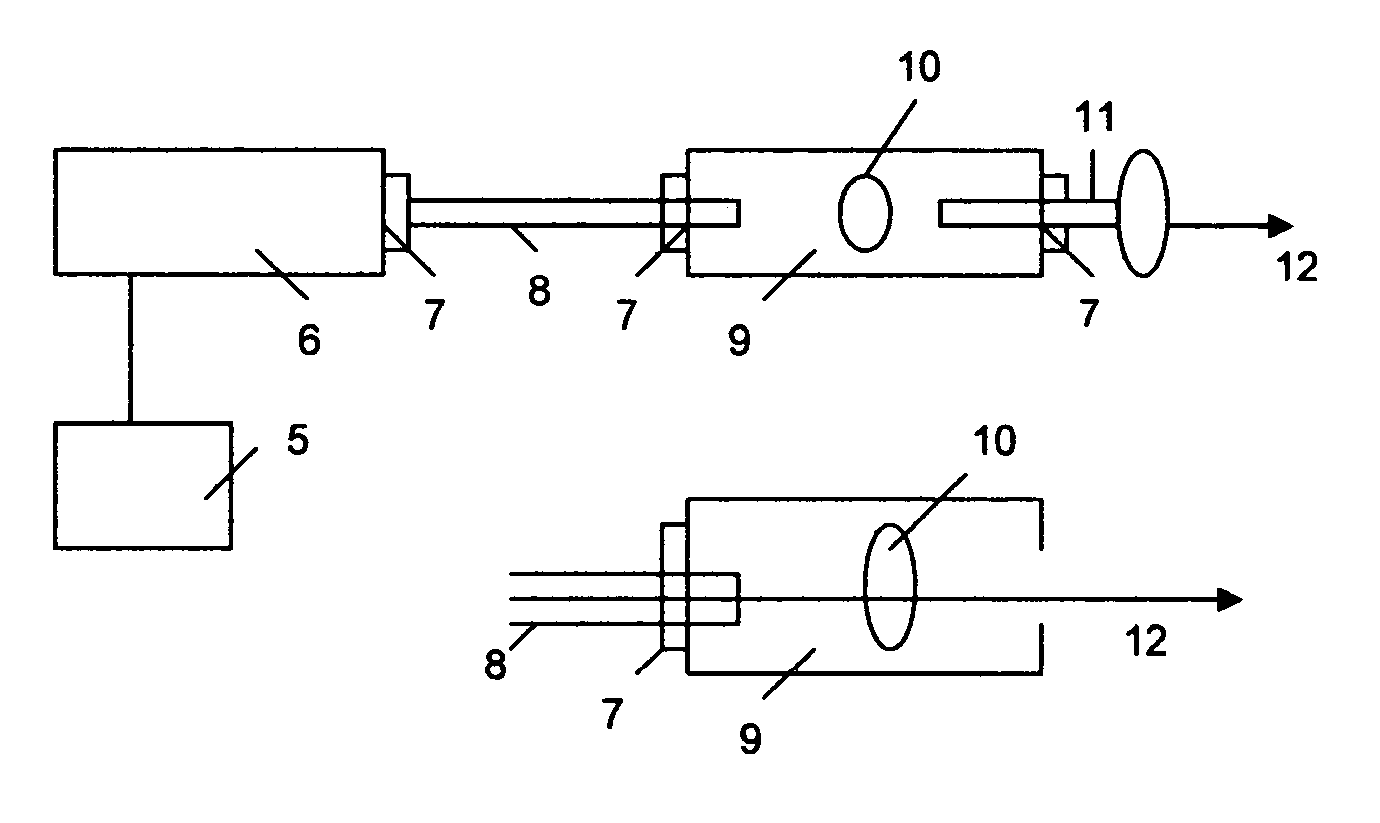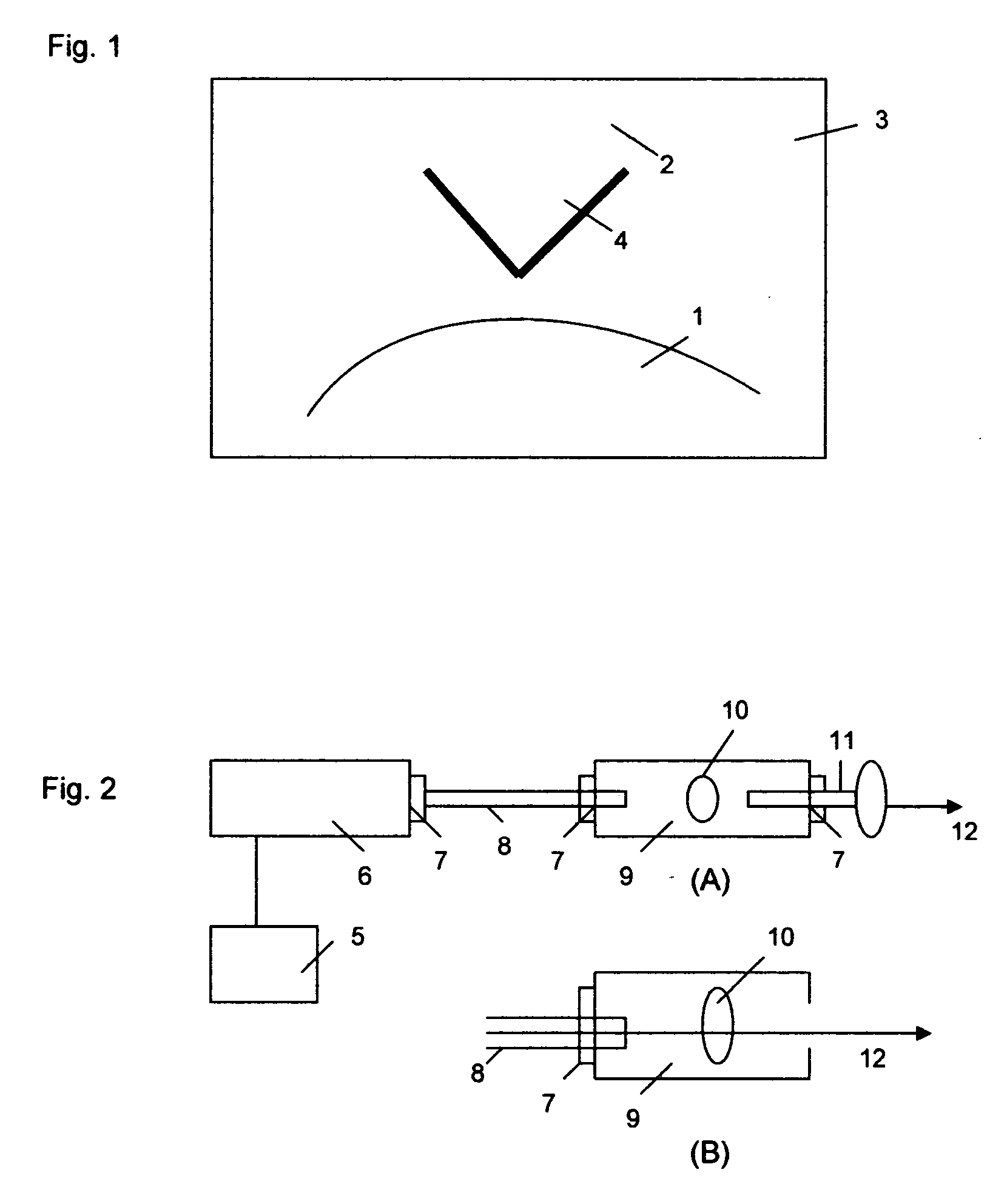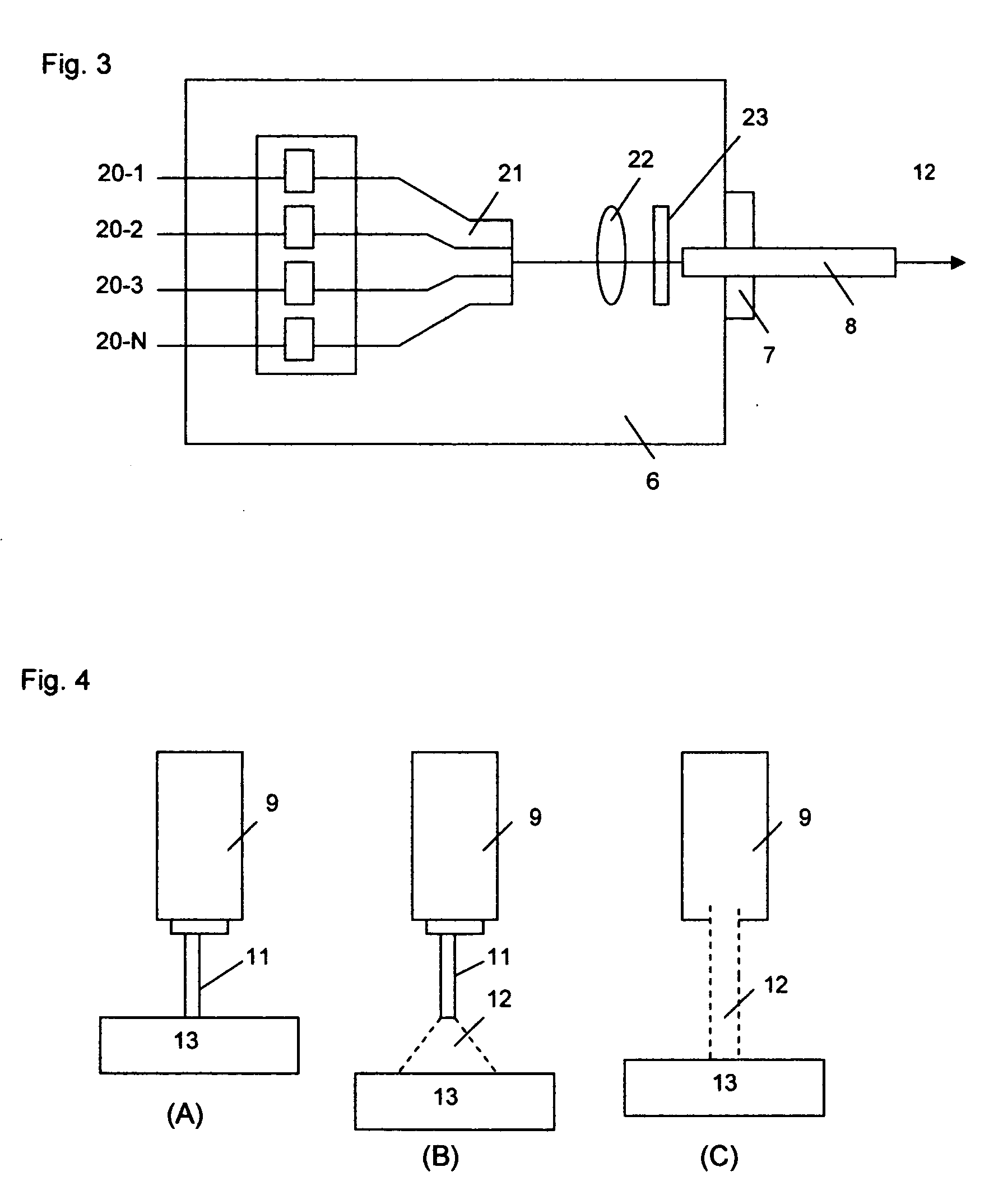Non-invasive method and system for the treatment of snoring and nasal obstruction
a non-invasive, nasal obstruction technology, applied in the field of non-invasive methods and systems for the treatment of snoring, sleep apnea and nasal obstruction, can solve the problems of long healing time, recommended for sleep apnea, and non-controllable vibration of the uvula or soft palate, and achieve the effect of efficient thermal shrinkage of the treated area
- Summary
- Abstract
- Description
- Claims
- Application Information
AI Technical Summary
Benefits of technology
Problems solved by technology
Method used
Image
Examples
Embodiment Construction
[0023] As shown in FIG. 1, when one falls into a deep sleep, the muscles in the tongue 1, throat and root of the mouth, the soft palate 2, relax. This muscle relaxation causes the throat tissues to sag and narrow the airway of the mouth 3, creating the sound of snoring. Snoring may be also caused a longer-than-normal uvula 4, thick soft palate or enlarge of tonsils or adenoids tissue between the back of the nose and throat. When one sleeps on back, the tongue falls backwards into the throat, this may also narrow the airway and partly block airway. Sleep apnea is the period when one stops breathing while one is sleeping, which may last for 10 seconds or longer. Both snoring and sleep apnea are caused by the throat tissues relaxation. Overweight or older people with weaker (or less firm) throat muscles is other factor causing snoring or sleep apnea. Nasal obstruction is due to chronic turbinate enlargement (or hypertrophy). Therefore, the preferred embodiment of this invention is to u...
PUM
 Login to View More
Login to View More Abstract
Description
Claims
Application Information
 Login to View More
Login to View More - R&D
- Intellectual Property
- Life Sciences
- Materials
- Tech Scout
- Unparalleled Data Quality
- Higher Quality Content
- 60% Fewer Hallucinations
Browse by: Latest US Patents, China's latest patents, Technical Efficacy Thesaurus, Application Domain, Technology Topic, Popular Technical Reports.
© 2025 PatSnap. All rights reserved.Legal|Privacy policy|Modern Slavery Act Transparency Statement|Sitemap|About US| Contact US: help@patsnap.com



